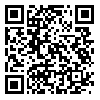BibTeX | RIS | EndNote | Medlars | ProCite | Reference Manager | RefWorks
Send citation to:
URL: http://jdisabilstud.org/article-1-2722-en.html
2- Department of Educational Sciences and Psychology, Tarbiat Dabir Shahid Rajaei University
3- Department of Consulting, Islamic Azad University, Research Sciences Branch
Background & Objectives: The study period is a life stage when university students may experience psychological problems. One of the most common psychological problems in adolescents and young adults is public speaking anxiety. One of the variables affecting speech anxiety is the affect balance. This balance refers to the development of the individuals in social relationships and harmonizing with their community. Affective balance promotes the intellectual development of individuals. Another variable affecting speech anxiety is social intelligence. This intelligence represents interpersonal relationships and the most critical capacity for success and happiness in life. Today, speech anxiety is a factor that causes changes in affect balance and social intelligence. This condition requires an improvement in students' affect balance and social intelligence. According to what was stated, this study aimed to predict speech anxiety based on affect balance and social intelligence in university students.
Methods: The research method was correlational. The statistical population of this study consisted of all student teachers of Farhangian University of Kerman Province, Iran, in the academic year 2020–2021. The study sample was selected using a cluster random sampling method. The inclusion criteria were being a student–teacher of Farhangian University of Kerman Province and studying in the academic year 2020–2021. The exclusion criterion included not completing the study questionnaires. The study tools were the Affect Balance Scale (Bradburn, 1969), Tromso Social Intelligence Scale (Silvera et al., 2001), and Speech Anxiety Thought Inventory (Cho et al., 2000). Descriptive and inferential statistics were used to analyze the data. Descriptive statistics included mean and standard deviation. The inferential statistics were the Pearson correlation coefficient, and multivariate regression analysis conducted in SPSS software version 22 at a significance level of 0.01.
Results: The Pearson correlation coefficients showed that affect balance (p<0.01, r=–0.414) and social intelligence (p<0.01, r=–0.446) had negative and significant relationships with speech anxiety. Also, affect balance (Beta=–0.247, p=0.024) and social intelligence (Beta=–0.319, p<0.001) could predict speech anxiety.
Conclusion: According to the obtained results, by increasing affect balance and social intelligence in the students, their speech anxiety can be reduced.
| Rights and permissions | |
 |
This work is licensed under a Creative Commons Attribution-NonCommercial 4.0 International License. |




